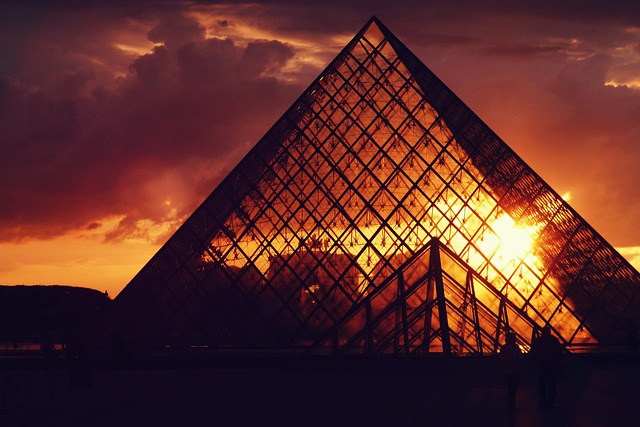Louvre: A Journey Through Time and Art
The Louvre, a name synonymous with art and culture, stands as one of the world’s largest and most visited art museums. Nestled in the heart of Paris, France, it is an edifice of history, creativity, and innovation. The journey of the Louvre is as captivating as the masterpieces it houses, spanning centuries and embodying the evolution of art and society.
A Brief History of the Louvre
Originally a fortress built in the late 12th century under King Philip II, the Louvre transitioned over the years from a royal palace to a public museum. The fortress was remodeled in the 16th century, primarily under King Francis I, who sought to create a residence befitting the majesty of the French monarchy. It was during this era that the collection began to flourish, initiated by Francis I’s acquisition of various Renaissance works.
In 1793, during the tumultuous times of the French Revolution, the Louvre officially opened as a public museum, showcasing a vast array of artworks that had been seized from the royal collections. This transformation marked not only a shift in the building’s purpose but also in the accessibility of art to the general populace, setting a precedent that continues to influence museums around the world today.
The Architectural Marvel
The Louvre’s architecture is a testament to the many eras that it has witnessed. The original medieval fortress, the Renaissance additions, and the modern glass pyramid designed by architect I. M. Pei, which was inaugurated in 1989, create a distinctive juxtaposition that embodies the museum’s varied history. The glass pyramid serves as the main entrance, inviting millions to explore the treasures contained within its walls.
The massive complex is divided into several wings, and each wing offers a unique narrative chronicling different periods and styles of art. The Richelieu Wing, Sully Wing, and Denon Wing collectively house thousands of pieces, making it an experience of walking through a timeline of human creativity.
Masterpieces Within the Walls
The Louvre’s collection is vast and varied, containing over 380,000 objects, of which approximately 35,000 are on display. The highlights of the museum offer a glimpse into the richness of human expression across different cultures and epochs.
The Mona Lisa
No discussion of the Louvre would be complete without mentioning one of the museum’s most iconic pieces: Leonardo da Vinci’s Mona Lisa. Enshrined in a climate-controlled glass case, this enigmatic portrait attracts millions of visitors each year. The Mona Lisa captivates with her elusive smile and masterful technique, inviting numerous interpretations and endless fascination.
The Venus de Milo
Another emblematic piece is the Venus de Milo, an ancient Greek statue discovered on the island of Milos. This stunning work embodies the classical ideals of beauty and has become a symbol of love and femininity. Despite its missing arms, it radiates a timeless elegance that has captivated viewers since its discovery in the 19th century.
The Winged Victory of Samothrace
The Winged Victory of Samothrace stands as a monumental representation of ancient Greek artistry. This masterpiece, depicting the goddess Nike, embodies the triumph of spirit and victory, artistic features that are still admired for their dynamism and detail. Displayed at the top of a grand staircase, it creates an awe-inspiring sight for visitors entering the museum.
The Coronation of Napoleon
Painted by Jacques-Louis David, The Coronation of Napoleon offers a grand portrayal of the moment Napoleon crowned himself in 1804. This enormous canvas captures the opulence of the First French Empire, reflecting not only artistic skill but also the historical context of power and authority during this significant era in French history.
Thematic Exhibits and Special Collections
Beyond these signature pieces, the Louvre dedicates significant space to thematic exhibits that explore particular art movements, ancient civilizations, and cultural intersections. The Egyptian Antiquities collection is one of the largest outside Egypt, showcasing a plethora of artifacts that narrate the story of ancient Egyptian society.
The museum also houses a significant collection of Islamic Art, demonstrating the artistic diversity that spans several centuries and cultures within the Islamic world. This inclusion highlights the Louvre’s commitment to presenting an inclusive narrative of global art history.
The Louvre and the Art World Today
Today, the Louvre is not just a museum; it acts as a cultural beacon, promoting art, education, and cultural exchange. The museum engages in various educational programs and partnerships that aim to enrich the understanding of art and its significance. From guided tours to workshops, the Louvre makes art accessible to people of all ages and backgrounds, fostering a deeper appreciation for creativity.
In recent years, the Louvre has embraced technology, introducing virtual tours and digital exhibitions that allow global audiences to experience its treasures from anywhere in the world. This adaptability reflects its ongoing commitment to innovation and engagement in an ever-evolving global landscape.
A Lasting Influence
The influence of the Louvre extends beyond its physical walls. As a pioneer of the public museum concept, it has inspired countless institutions around the globe to adopt similar models, encouraging the democratization of art. The Louvre’s vast repository has also played a crucial role in shaping art education and promoting critical discourse around artistic practices and cultural representation.
Conclusion
Embarking on a journey through the Louvre is not merely a visual experience; it’s a traverse through centuries of human endeavor, creativity, and resilience. Each piece of art tells a story—of love, triumph, cultural exchange, and societal evolution. The Louvre, in its majestic presence, stands not only as a testament to artistic genius but also as a crucial chapter in the narrative of humanity. It invites everyone to explore, reflect, and connect with the past while inspiring future generations to appreciate and create art.
For anyone visiting Paris, a trip to the Louvre is an essential pilgrimage for art lovers and curiosity seekers alike. As one steps through its historic halls, they are bound to be transported through time, encountering masterpieces that have shaped our understanding of beauty, culture, and humanity itself.
